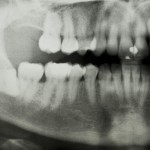
While piezoelectric bone surgery (piezosurgery) has been in use for around 30 years it has not, until recently, been used for the surgical removal of teeth.
The aim of this review was to determine if postoperative sequelae (facial swelling, trismus, pain) and neurological complications are reduced when mandibular third molars are surgically extracted using a piezoelectric device for osteotomy compared with conventional rotary burs.
Methods
Searches were conducted in the PubMed, Embase, Cochrane Central Register of Controlled Trials (CENTRAL) and Google Scholar databases with no language restrictions. Trials comparing conventional rotary bur osteotomy with piezoelectric osteotomy for the surgical removal of mandibular third molars were considered. The primary outcomes were pain, facial swelling, and trismus.
Data was extracted by a single reviewer with risk of bias being assessed independently by two reviewers using the Cochrane tool. The body of evidence was evaluated using the GRADE (Grading of Recommendations, Assessment, Development, and Evaluation) system. Meta-analysis and sensitivity analysis were conducted.
Results
- 15 studies involving a total of 1013 patients were included.
- 5 studies were randomised controlled trials (RCTs), 10 controlled clinical trials (CCTs).
- None of the studies was at low risk of bias.
- The studies flap designs were similar but odontotomy protocols differed.
- 14 studies used co-interventions which had the potential to influence the findings for the outcomes.
- 9 studies reported in facial swelling with less swelling at post-op day 1 and day 7 with piezoelectric surgery.
- Day 1; Standard mean difference (SMD) = -1.15 (95%CI; -2.02 to -0.27) p<0.0001.
- Day 7 SMD= -0.98 (95%CI; -1.52 to -0.44//0 p=0.05)
- 7 studies addressed maximum mouth opening (MMO) at various time points. Pooled analysis (5 studies) suggest greater MMO with piezoelectric surgery
- SMD = 0.51(95%CI; -0.15 to 1.18) p = 0.02, I2 = 71.5%
- 10 studies reported intensity of pain as a continuous variable using a visual analogue scale (VAS) with analysis suggesting less pain with piezoelectric surgery
- Pot-op day 1 SMD = -0.84 (95%CI; -1.55 to -0.13) p<0.0001.
- Post-op day 5 SMD = -0.51(95%CI; -1.19 to 0.18) p < 0.0001.
- Operating time was longer with the piezoelectric device SMD = 0.83 (95% CI 0.57 to 1.09) p=0.001).
Conclusions
The authors concluded
data relating to piezosurgery in the extraction of mandibular third molars are still limited. Further studies are required to validate the current data, which have raised the possibility of improved healing compared with traditional rotary burs, albeit with a prolonged operating time.
Comments
An earlier meta-analysis of this question was published in 2015 by Al-Moraissi et al (Dental Elf – 26th Nov 2015 ). That review identified fewer studies (9 studies (6 RCTs, 2 CCTs and 1 retrospective) compared with the 15 identified by the current review. Although the number of RCTs is similar. However, while both reviews suggest that the outcomes may be better with piezoelectric surgery the quality of the original studies is poor and may of the included studies used co-interventions, a point highlighted by the review authors. Well planned, conducted and reported RCTs are needed to clarify whether outcomes are better with piezoelectric surgery than traditional surgical approaches.
Links
Primary paper
Badenoch-Jones EK, David M, Lincoln T. Piezoelectric compared with conventional rotary osteotomy for the prevention of postoperative sequelae and complications after surgical extraction of mandibular third molars: a systematic review and meta-analysis. Br J Oral Maxillofac Surg. 2016 Dec;54(10):1066-1079. doi: 10.1016/j.bjoms.2016.07.020. Review. PubMed PMID: 27832920.
Other references
Dental Elf 26th Nov 2015
Third molar removal – does piezoelectric surgery improve outcomes?
